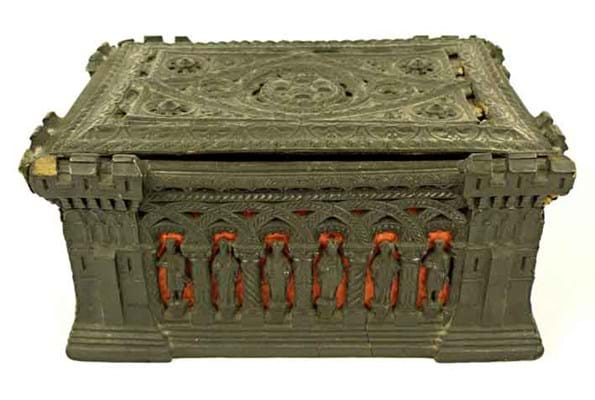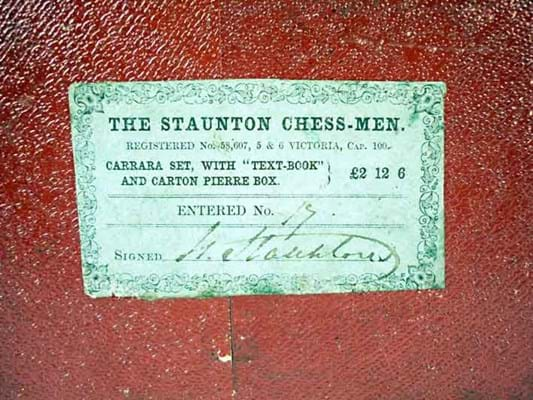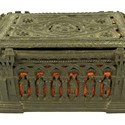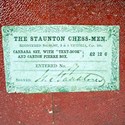And it was one Nathaniel Cook, editor of the Illustrated London News, who on March 1, 1849, registered the distinctive design that would achieve that aim.
Cook's Ornamental Design for a set of Chess Men was daring in its relative simplicity and utility (its trademark pieces the knight carved as a stallion's head from the Elgin marbles and the bishop with a diagonal cut to indicate a mitre) and it was quickly embraced by both a Hatton Garden purveyor of fine games and the era's leading player.
The combination of John Jaques, keen to embrace a design that could be produced at relatively low cost, and the endorsement of the product by the English chess master Howard Staunton (1810-1874), proved unstoppable.
It was perhaps the first time that a celebrated name had been used to promote a commercial product in this way. It would not be the last.
According to adverts in the Illustrated London News dated September 8, 1849, the first Jaques Staunton pattern sets were available in "the finest African ivory (5 guineas), boxwood and ebony (£1/15 shillings or club size (£2/5 shillings) and Wedgwood's Carrara (£2/12/6 shillings)".
All sorts of minutiae are involved in the dating of these early issues (size, signatures, weights, materials, construction etc) but boxes and labels are an equally serious consideration.
Frank Camaretta, one of a handful of collectors who have pushed forward the scholarship in this area in recent years, wrote a very useful article on the subject On Collecting Staunton Chessmen published in Chess Life in November 2008. An original box is as important here as it is in the die-cast toy world.
Early Jaques sets were sold in two types of 'packaging' - dovetailed mahogany hinged-topped boxes with mortise locks and rounded corners and "the unique box of carton-pierre resembling richly carved ebony". Designed by one Joseph L. Williams, these gothic revival caskets are distinctive for their castellated corners and pierced chess pieces and were available in three sizes.
In the first two years of Staunton production, the boxes carried paper registration labels titled The Staunton Chessmen that, along with a printed description of the box and its contents, were hand signed and numbered by Howard Staunton himself.
Up to 1000 sets were signed in this way before a facsimile signature was used and they are a holy grail of chess collecting.
Lot 1 at the Rosehill, Carlisle, salerooms of H&H Auctions on March 26 was an 8½in (21cm) wide carton-pierre casket with a paper label reading Carrara Set With Text-Book and Carton Pierre Box £2.12.6. It was numbered in ink '17' and signed H. Staunton.
It had been entered for a weekly general sale in a box of bric-a-brac by a Carlisle charity shop but - although devoid of contents and in poor condition - was spotted as something worthy of research by auctioneer Paul Laidlaw.
His colleague Georgina Nixon soon identified it as a 'signed first production' box with a very early number from September 1849 but it also proved of great interest as the box for the enigmatic Carrara set.
These Staunton pattern sets were apparently made by Wedgwood in a white hard-paste porcelain 'parian' body although it was hitherto unclear if any were actually produced. According to Frank Camaretta, they are "largely unknown to both the Wedgwood and the chess collector communities".
The box was cautiously estimated £300-500 (the price of a standard carton-pierre casket) but two telephone bidders and a generous commission bid saw it sell at £5800 (plus 19.5% buyer's premium).
The Staunton pattern remains the style required for chess tournaments today.








